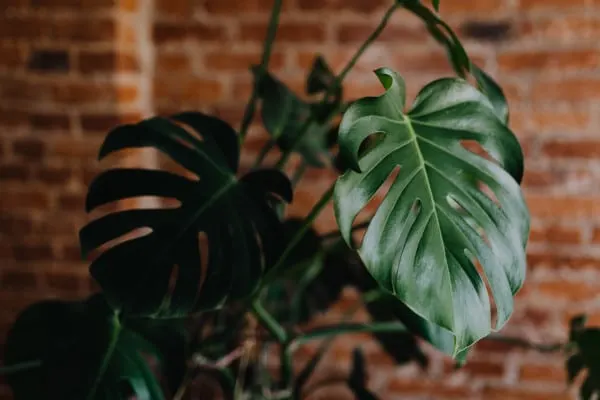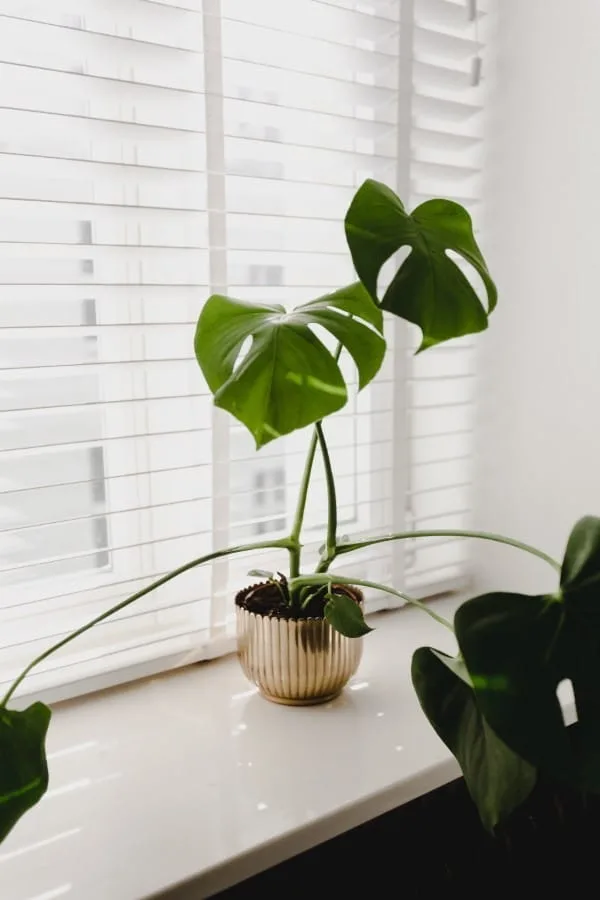So here’s the problem… You’ve just added a Deliciosa Monstera to your indoor garden. And you can finally see that fresh Monstera leaf sprouting.
Yet, the issue is that the new and existing leaves scarcely have any openings or parts (also known as fenestrations) on them.
The million-dollar question is, how to get Monstera leaves to split? This article will discuss methods that you can follow to get your plant leaves split.
The notable openings and splits in Monstera leaves will show up on new leaves when your plant acquires maturity. In the first place, the state of Monstera leaves relies upon the age of the plant.
Assuming your Monstera has a few leaves with fenestrations and some without, you may see that the parts show up on the freshest leaves.
Fenestrations appear when the Monstera is old and glad enough to create mature leaves with splits. A child Monstera as long as a year old, will have heart-molded leaves without any holes.
To cause your Monstera leaves to split, first, make sure your houseplant gets plenty of bright indirect sunshine. Second, ensure that the plant receives adequate fertilizer and water to ensure its growth.
If none of them appear to be the issue, the plant may still be too young to split its leaves. Whether you’ve had thousands of plants or this is your first tropical leaves with holes, it’s critical to recognize that the environment has a significant impact on the rate at which your indoor plant grows.

How to Get Monstera Leaves to Split?
Monstera’s leaves will unroll, revealing all of the fenestrations that have already been created. A leaf that has already split cannot split again.
As a result, if a Monstera leaf has fractures or tears, it is most likely structural damage rather than a split-leaf forming. In addition, if the humidity is too low, leaves can split when unfurling (see our humidity guide). Also, here’s how to deal with Monstera leaves injured.
The faster your Monstera develops, the sooner it will get fenestrated leaves. Providing the best possible growing environment is the best approach to encourage this.
If your Monstera leaves don’t have splits yet, consider improving the following factors:
1. Provide Proper Sunlight
- The Monstera plant is a resilient plant that may thrive in various conditions.
- Monstera plants demand a good deal of strong light but not direct sunlight.
- If you want your plant’s leaves to split, ensure it’s exposed to plenty of bright light.
- Too much direct sunlight can produce leaf burns, yet the appropriate quantity of sunshine can aid in leaf splitting.
- If you’re going to put it near a window with a lot of light pouring in, invest in a sheer drape to keep the leaves out.
- Don’t worry if you don’t have good lighting in your home. You can always use a supplementary grow light.
- You may buy ready-made grow lights or install grow bulbs in normal light fixtures, which can be a more appealing option than the greenhouse-style lights available at nurseries.
2. Provide Enough Water
- Watering schedules don’t usually work for Monstera plants. It’s preferable to wait until the top 2 inches of soil have dried up before starting.
- They don’t need to be watered every day, but you should keep an eye on the soil’s moisture level.
- Once a week, use a moisture probe to see if your plant needs to be watered for the week.
- Watering your plant from the bottom is the best method. This ensures that your plant receives the proper amount of water.
- You can use a bathtub, a sink, or even a shallow saucer or any other container that will fit the pot to bottom water plants.
- Fill it to the brim with water. It’s where you’ll put your plant. Allow for roughly 10 minutes of resting time.
- Drain the water and let it dry before returning it to its original spot.
- Later, check the saucer for any standing water that may have escaped from the pot.
- Allowing it to sit in too much water for too long will result in root rot. So please stay away from it at all costs.
- Overwatering is one of the most common mistakes made by plant owners of all kinds, as too much water slows the growth of the Monstera and causes the leaves to turn yellow.
3. Use Good Quality Soil
- A pot with drainage holes would be really useful, and the soil drains effectively. After all, you’ll need those roots.
- One part soil, one part peat moss, and one part sand should make up the ideal well-draining soil. This mixture is ideal for drainage and provides aeration to the roots and leaves, allowing them to absorb the nutrients they require to thrive.
4. Provide Proper Nutrients
- Make sure your Monstera has all the nutrition it needs to grow quickly.
- Fertilize Monsteras regularly, especially in the spring and summer when they are most likely to have growth surges.
- They also need good nitrogen, phosphorus, and potassium balance.
- If you’re unsatisfied with your Monstera’s development, fertilize it once a month with a fertilizer that contains these nutrients.
5. Provide Support
- Allowing your Monstera to climb and using a support, such as a moss pole, will help the leaves split sooner.

How can you tell if your Monstera is satisfied?
Looking for holes in the leaves is the quickest method to tell if a Monstera is pleased. You may be confident that an appropriately aged Monstera grows slowly and matures as predicted if holes are present.
If your Monstera is still too young to develop holes in its leaves, there are some other signals to check for to verify that it is content in its surroundings:
- The leaves of a happy Monstera plant should be dark green. They should also have a lustrous gloss to them. If the leaves turn brown or yellow or become dull or crunchy, it’s time to adjust your maintenance routine.
- The leaves of a happy Monstera should grow steadily. This is true even in plants too young for the leaves to split. Weekly, check a couple of leaves to make sure growth hasn’t slowed.
- As new stems emerge, the Monstera plant should grow vertically and horizontally. Keep an eye out for new leaves that are blossoming regularly.
>> Related Posts:
Final Remarks
Monsteras are a delight to behold. What’s not to enjoy about their soaring roots and climbing vines? Monstera leaves usually separate between the ages of 2 and 3.
While this is the recommended schedule for healthy Monsteras, make sure to continue to give your plants the attention they need. That involves having enough strong indirect lighting, correctly watering, and providing sufficient nutrients.
It all boils down to this: the more accurately you can mimic your plant’s natural environment, the healthier it will be, the more it will grow, and the more its leaves will split like they do in the wild.
Don’t worry if your leaves aren’t separating. Interpret this as a request from your plant, and do your best to meet it. Learning to decipher your plant’s signals is just one aspect of the experience of being a plant parent!
